Preparation of Anisotropic Aerogels with Pristine Graphene by Heat Flow and Study of Their Effects on Heat Transfer in Paraffin
Abstract
1. Introduction
2. Experimental
2.1. Preparation of AGAs
2.1.1. Preparation of Graphene Dispersion
2.1.2. Preparation of AGA
2.2. Performance and Structure Characterization
3. Results and Discussion
4. Conclusions
Author Contributions
Funding
Conflicts of Interest
References
- Gao, H.Y.; Wang, J.J.; Chen, X.; Wang, G.; Huang, X.B.; Li, A.; Dong, W.J. Nanoconfinement effects on thermal properties of nanoporous shape-stabilized composite PCMs: A review. Nano Energy 2018, 53, 769–797. [Google Scholar] [CrossRef]
- Li, C.C.; Xie, B.S.; Chen, D.L.; Chen, J.; Li, W.; Chen, Z.S.; Gibb, S.W.; Long, Y. Ultrathin graphite sheets stabilized stearic acid as a composite phase change material for thermal energy storage. Energy 2019, 166, 246–255. [Google Scholar] [CrossRef]
- Zhong, Y.J.; Zhao, B.C.; Lin, J.; Zhang, F.; Wang, H.R.; Zhu, Z.Y.; Dai, Z.M. Encapsulation of high-temperature inorganic phase change materials using graphite as heat transfer enhancer. Renew. Energy 2019, 133, 240–247. [Google Scholar] [CrossRef]
- Gu, X.B.; Liu, P.; Bian, L.; He, H.C. Enhanced thermal conductivity of palmitic acid/mullite phase change composite with graphite powder for thermal energy storage. Renew. Energy 2019, 138, 833–841. [Google Scholar] [CrossRef]
- Li, C.C.; Zhang, B.; Xie, B.S.; Zhao, X.B.; Chen, J.; Chen, Z.S.; Long, Y. Stearic acid/expanded graphite as a composite phase change thermal energy storage material for tankless solar water heater. Sustain. Cities Soc. 2019, 44, 458–464. [Google Scholar] [CrossRef]
- Li, Y.Y.; Zhang, X.L.; Munyalo, J.M.; Tian, Z.; Ji, J. Preparation and thermophysical properties of low temperature composite phase change material octanoic-lauric acid/expanded graphite. J. Mol. Liq. 2019, 277, 577–583. [Google Scholar] [CrossRef]
- Hua, J.S.; Yuan, C.; Zhao, X.; Zhang, J.; Du, J.X. Structure and thermal properties of expanded graphite/paraffin composite phase change material. Energy Sources Part Recovery Util. Environ. Eff. 2019, 41, 86–93. [Google Scholar] [CrossRef]
- Zhang, Q.; Liu, J. Anisotropic thermal conductivity and photodriven phase change composite based on RT100 infiltrated carbon nanotube array. Sol. Energy Mater. Sol. Cells 2019, 190, 1–5. [Google Scholar] [CrossRef]
- Wang, C.M.; Chen, K.; Huang, J.; Cai, Z.Y.; Hu, Z.J.; Wang, T.J. Thermal behavior of polyethylene glycol based phase change materials for thermal energy storage with multiwall carbon nanotubes additives. Energy 2019, 180, 873–880. [Google Scholar] [CrossRef]
- Esmaeilzadeh, Z.; Rezaei, B.; Shoushtari, A.M.; Mojtahedi, M.R.M. Enhancing the thermal characteristics of shape-stabilized phase change nanocomposite nanofibers by incorporation of multiwalled carbon nanotubes within the nanofibrous structure. Adv. Polym. Technol. 2018, 37. [Google Scholar] [CrossRef]
- Li, Q.; Li, C.; Qiao, G.; Zhao, Y.Q.; Huang, Y.T.; Peng, X.D.; Lei, X.Z.; Ding, Y.L. Effects of MgO particle size and density on microstructure development of MgO based composite phase change materials. In Innovative Solutions for Energy Transitions; Yan, J., Yang, H.X., Li, H., Chen, X., Eds.; Elsevier Science Bv: Amsterdam, The Netherlands, 2019; Volume 158, pp. 4517–4522. [Google Scholar]
- Sivasamy, P.; Harikrishnan, S.; Hussain, S.I.; Kalaiselvam, S.; Babu, L.G. Improved thermal characteristics of Ag nanoparticles dispersed myristic acid as composite for low temperature thermal energy storage. Mater. Res. Express 2019, 6. [Google Scholar] [CrossRef]
- Song, X.F.; Cai, Y.B.; Huang, C.; Gu, Y.; Zhang, J.H.; Qiao, H.; Wei, Q.F. Cu nanoparticles improved thermal property of form-stable phase change materials made with carbon nanofibers and la-ma-sa eutectic mixture. J. Nanosci. Nanotechnol. 2018, 18, 2723–2731. [Google Scholar] [CrossRef] [PubMed]
- Xiao, Q.Q.; Zhang, M.D.; Fan, J.X.; Li, L.; Xu, T.; Yuan, W.H. Thermal conductivity enhancement of hydrated salt phase change materials employing copper foam as the supporting material. Sol. Energy Mater. Sol. Cells 2019, 199, 91–98. [Google Scholar] [CrossRef]
- Zheng, H.P.; Wang, C.H.; Liu, Q.M.; Tian, Z.X.; Fan, X.B. Thermal performance of copper foam/paraffin composite phase change material. Energy Convers. Manag. 2018, 157, 372–381. [Google Scholar] [CrossRef]
- Abishek, S.; King, A.J.C.; Nadim, N.; Mullins, B.J. Effect of microstructure on melting in metal-foam/paraffin composite phase change materials. Int. J. Heat Mass Transf. 2018, 127, 135–144. [Google Scholar] [CrossRef]
- Mu, B.Y.; Li, M. Fabrication and thermal properties of tetradecanol/graphene aerogel form-stable composite phase change materials. Sci. Rep. 2018, 8, 8878. [Google Scholar] [CrossRef] [PubMed]
- Yang, J.; Li, X.F.; Han, S.; Yang, R.Z.; Min, P.; Yu, Z.Z. High-quality graphene aerogels for thermally conductive phase change composites with excellent shape stability. J. Mater. Chem. A 2018, 6, 5880–5886. [Google Scholar] [CrossRef]
- Min, P.; Liu, J.; Li, X.F.; An, F.; Liu, P.F.; Shen, Y.X.; Koratkar, N.; Yu, Z.Z. Thermally conductive phase change composites featuring anisotropic graphene aerogels for real-time and fast-charging solar-thermal energy conversion. Adv. Funct. Mater. 2018, 28. [Google Scholar] [CrossRef]
- Yang, J.; Qi, G.Q.; Liu, Y.; Bao, R.Y.; Liu, Z.Y.; Yang, W.; Xie, B.H.; Yang, M.B. Hybrid graphene aerogels/phase change material composites: Thermal conductivity, shape-stabilization and light-to-thermal energy storage. Carbon 2016, 100, 693–702. [Google Scholar] [CrossRef]
- Mehrali, M.; Latibari, S.T.; Mehrali, M.; Metselaar, H.S.C.; Silakhori, M. Shape-stabilized phase change materials with high thermal conductivity based on paraffin/graphene oxide composite. Energy Convers. Manag. 2013, 67, 275–282. [Google Scholar] [CrossRef]
- Liu, L.; Zheng, K.; Yan, Y.; Cai, Z.H.; Lin, S.X.; Hu, X.B. Graphene Aerogels Enhanced Phase Change Materials prepared by one-pot method with high thermal conductivity and large latent energy storage. Sol. Energy Mater. Sol. Cells 2018, 185, 487–493. [Google Scholar] [CrossRef]
- Chen, Z.; Ren, W.; Gao, L.; Liu, B.; Pei, S.; Cheng, H.M. Three-dimensional flexible and conductive interconnected graphene networks grown by chemical vapor deposition. Nat. Mater. 2011, 10, 424–428. [Google Scholar] [CrossRef] [PubMed]
- Ito, Y.; Qiu, H.J.; Fujita, T.; Tanabe, Y.; Tanigaki, K.; Chen, M. Bicontinuous nanoporous N-doped graphene for the oxygen reduction reaction. Adv. Mater. 2014, 26, 4145–4150. [Google Scholar] [CrossRef] [PubMed]
- Zhu, C.; Han, T.Y.J.; Duoss, E.B.; Golobic, A.M.; Kuntz, J.D.; Spadaccini, C.M.; Worsley, M.A. Highly compressible 3D periodic graphene aerogel microlattices. Nat. Commun. 2015, 6, 8. [Google Scholar] [CrossRef] [PubMed]
- Zhang, X.T.; Sui, Z.Y.; Xu, B.; Yue, S.F.; Luo, Y.J.; Zhan, W.C.; Liu, B. Mechanically strong and highly conductive graphene aerogel and its use as electrodes for electrochemical power sources. J. Mater. Chem. 2011, 21, 6494–6497. [Google Scholar] [CrossRef]
- Hu, H.; Zhao, Z.B.; Wan, W.B.; Gogotsi, Y.; Qiu, J.S. Ultralight and highly compressible graphene aerogels. Adv. Mater. 2013, 25, 2219–2223. [Google Scholar] [CrossRef] [PubMed]
- Yan, S.; Zhang, G.Z.; Li, F.B.; Zhang, L.; Wang, S.T.; Zhao, H.H.; Ge, Q.; Li, H.J. Large-area superelastic graphene aerogels based on a room-temperature reduction self-assembly strategy for sensing and particulate matter (PM2.5 and PM10) capture. Nanoscale 2019, 11, 10372–10380. [Google Scholar] [CrossRef] [PubMed]
- Balandin, A.A.; Ghosh, S.; Bao, W.; Calizo, I.; Teweldebrhan, D.; Miao, F.; Lau, C.N. Superior thermal conductivity of single-layer graphene. Nano Lett. 2008, 8, 902–907. [Google Scholar] [CrossRef] [PubMed]
- Timo, S. An electrical method for the measurement of the thermal and electrical conductivity of reduced graphene oxide nanostructures. Nanotechnology 2009, 40, 405704. [Google Scholar]
- Yue, C.W.; Feng, J.; Feng, J.Z.; Jiang, Y.G. Low-thermal-conductivity nitrogen-doped graphene aerogels for thermal insulation. RSC Adv. 2016, 6, 9396–9401. [Google Scholar] [CrossRef]
- Cheng, Y.H.; Zhou, S.B.; Hu, P.; Zhao, G.D.; Li, Y.X.; Zhang, X.H.; Han, W.B. Enhanced mechanical, thermal, and electric properties of graphene aerogels via supercritical ethanol drying and high-temperature thermal reduction. Sci. Rep. 2017, 7, 11. [Google Scholar] [CrossRef] [PubMed]
- Li, X.H.; Liu, P.F.; Li, X.F.; An, F.; Min, P.; Liao, K.N.; Yu, Z.Z. Vertically aligned, ultralight and highly compressive all-graphitized graphene aerogels for highly thermally conductive polymer composites. Carbon 2018, 140, 624–633. [Google Scholar] [CrossRef]
- Li, G.Y.; Zhang, X.T.; Wang, J.; Fang, J.H. From anisotropic graphene aerogels to electron-and photo-driven phase change composites. J. Mater. Chem. A 2016, 4, 17042–17049. [Google Scholar] [CrossRef]
- Hummers, W.S., Jr.; Offeman, R.E. Preparation of graphitic oxide. J. Am. Chem. Soc. 1958, 80, 1339. [Google Scholar] [CrossRef]
- Huang, J.; Huang, X.; He, M.; Zhang, B.; Feng, G.; Yin, G.; Cui, Y. Control of graphene aerogel self-assembly in strongly acidic solution via solution polarity tuning. RSC Adv. 2019, 9, 21155–21163. [Google Scholar] [CrossRef]
- Garcia-Bordeje, E.; Victor-Roman, S.; Sanahuja-Parejo, O.; Benito, A.M.; Maser, W.K. Control of the microstructure and surface chemistry of graphene aerogels via pH and time manipulation by a hydrothermal method. Nanoscale 2018, 10, 3526–3539. [Google Scholar] [CrossRef] [PubMed]
- Graf, D.; Molitor, F.; Ensslin, K.; Stampfer, C.; Jungen, A.; Hierold, C.; Wirtz, L. Spatially resolved raman spectroscopy of single-and few-layer graphene. Nano Lett. 2006, 7, 238. [Google Scholar] [CrossRef] [PubMed]
- Livneh, T.; Haslett, T.L.; Moskovits, M. Distinguishing disorder-induced bands from allowed Raman bands in graphite. Phys. Rev. B 2002, 66. [Google Scholar] [CrossRef]
- Canc¸ado, L.G.; Pimenta, M.A.; Neves, B.R.A.; Dantas, M.S.S.; Jorio, A. Influence of the atomic structure on the Raman spectra of graphite edges. Phys. Rev. Lett. 2004, 93, 247401. [Google Scholar] [CrossRef] [PubMed]
- Kudin, K.N.; Ozbas, B.; Schniepp, H.C.; Prud’Homme, R.K.; Aksay, I.A.; Car, R. Raman spectra of graphite oxide and functionalized graphene sheets. Nano Lett. 2008, 8, 36. [Google Scholar] [CrossRef] [PubMed]
- Stankovich, S.; Dikin, D.A.; Piner, R.D.; Kohlhaas, K.A.; Kleinhammes, A.; Jia, Y.; Wu, Y.; Nguyen, S.T.; Ruoff, R.S. Synthesis of graphene-based nanosheets via chemical reduction of exfoliated graphite oxide. Carbon 2007, 45, 1558–1565. [Google Scholar] [CrossRef]
- Buchsteiner, A.; Lerf, A.; Pieper, J. Water dynamics in graphite oxide investigated with neutron scattering. J. Phys. Chem. B 2006, 110, 22328–22338. [Google Scholar] [CrossRef] [PubMed]
- Park, S.; An, J.; Potts, J.R.; Velamakanni, A.; Murali, S.; Ruoff, R.S. Hydrazine-reduction of graphite-and graphene oxide. Carbon 2011, 49, 3019–3023. [Google Scholar] [CrossRef]
- Xie, Y.S.; Xu, S.; Xu, Z.L.; Wu, H.C.; Deng, C.; Wang, X.W. Interface-mediated extremely low thermal conductivity of graphene aerogel. Carbon 2016, 98, 381–390. [Google Scholar] [CrossRef]
- Tian, B.Q.; Yang, W.B.; He, F.F.; Xie, C.Q.; Zhang, K.; Fan, J.H.; Wu, J.Y. Paraffin/carbon aerogel phase change materials with high enthalpy and thermal conductivity. Fuller. Nanotub. Carbon Nanostructures 2017, 25, 512–518. [Google Scholar] [CrossRef]
- Ye, S.B.; Zhang, Q.L.; Hu, D.D.; Feng, J.C. Core-shell-like structured graphene aerogel encapsulating paraffin: Shape-stable phase change material for thermal energy storage. J. Mater. Chem. A 2015, 3, 4018–4025. [Google Scholar] [CrossRef]
- Jung, G.S.; Yeo, J.; Tian, Z.T.; Qin, Z.; Buehler, M.J. Unusually low and density-insensitive thermal conductivity of three-dimensional gyroid graphene. Nanoscale 2017, 9, 13477–13484. [Google Scholar] [CrossRef] [PubMed]
- Yang, J.; Qi, G.-Q.; Bao, R.-Y.; Yi, K.; Li, M.; Peng, L.; Cai, Z.; Yang, M.-B.; Wei, D.; Yang, W. Hybridizing graphene aerogel into three-dimensional graphene foam for high-performance composite phase change materials. Energy Storage Mater. 2018, 13, 88–95. [Google Scholar] [CrossRef]
- Guo, Y.L.; Yang, W.B.; He, F.F.; Xie, C.Q.; Fan, J.H.; Wu, J.Y.; Zhang, K. Electrostatic interaction-based self-assembly of paraffin@graphene microcapsules with remarkable thermal conductivity for thermal energy storage. Fuller. Nanotub. Carbon Nanostructures 2019, 27, 120–127. [Google Scholar] [CrossRef]
- Cao, Q.; He, F.; Xie, C.; Fan, J.; Wu, J.; Zhang, K.; Yang, Z.; Yang, W. Paraffin-based shape-stable phase change materials with graphene/carbon nanotube three-dimensional network structure. Fuller. Nanotub. Carbon Nanostructures 2019, 27, 492–497. [Google Scholar] [CrossRef]
- Zhong, Y.J.; Zhou, M.; Huang, F.Q.; Lin, T.Q.; Wan, D.Y. Effect of graphene aerogel on thermal behavior of phase change materials for thermal management. Sol. Energy Mater. Sol. Cells 2013, 113, 195–200. [Google Scholar] [CrossRef]
- Yang, W.; Zhang, L.; Guo, Y.; Jiang, Z.; He, F.; Xie, C.; Fan, J.; Wu, J.; Zhang, K. Novel segregated-structure phase change materials composed of paraffin@graphene microencapsules with high latent heat and thermal conductivity. J. Mater. Sci. 2018, 53, 2566–2575. [Google Scholar] [CrossRef]
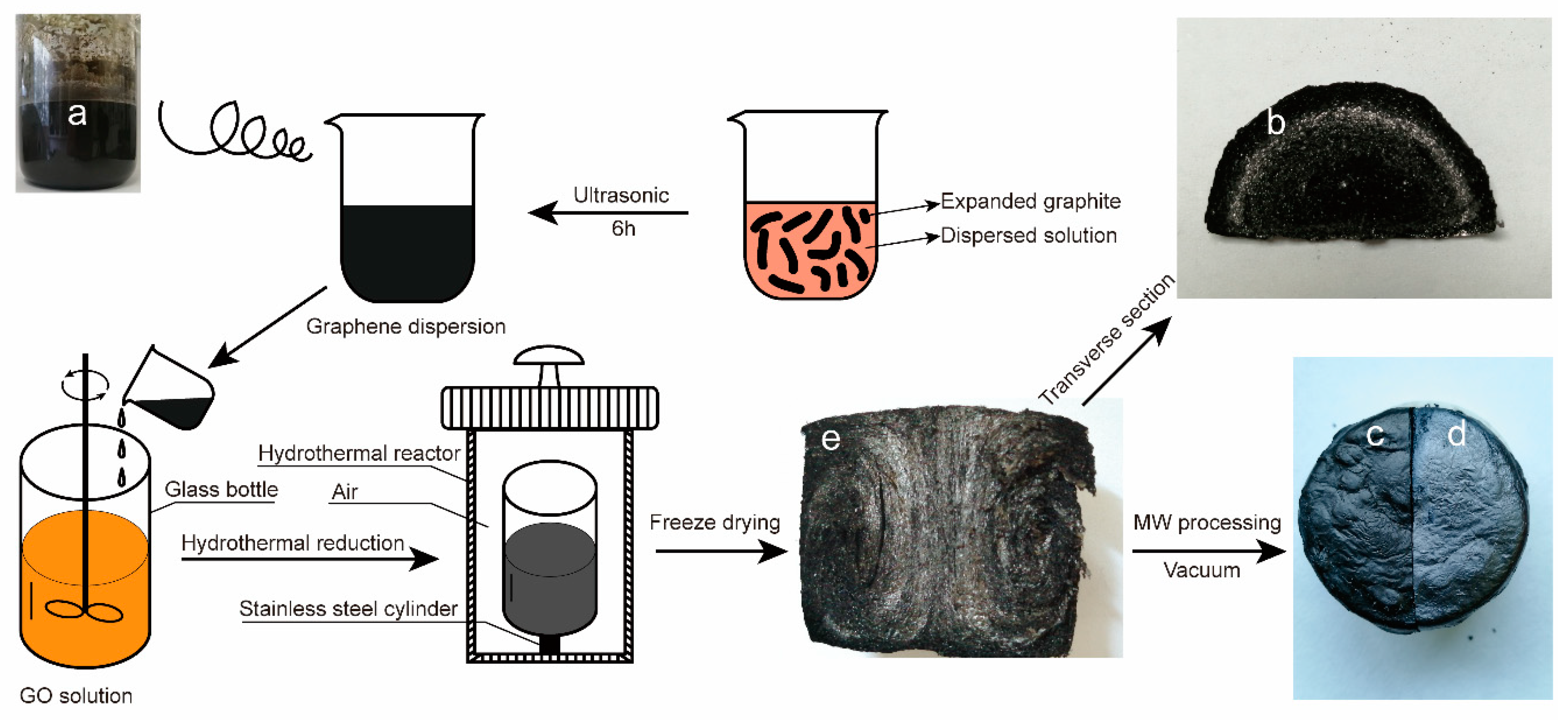
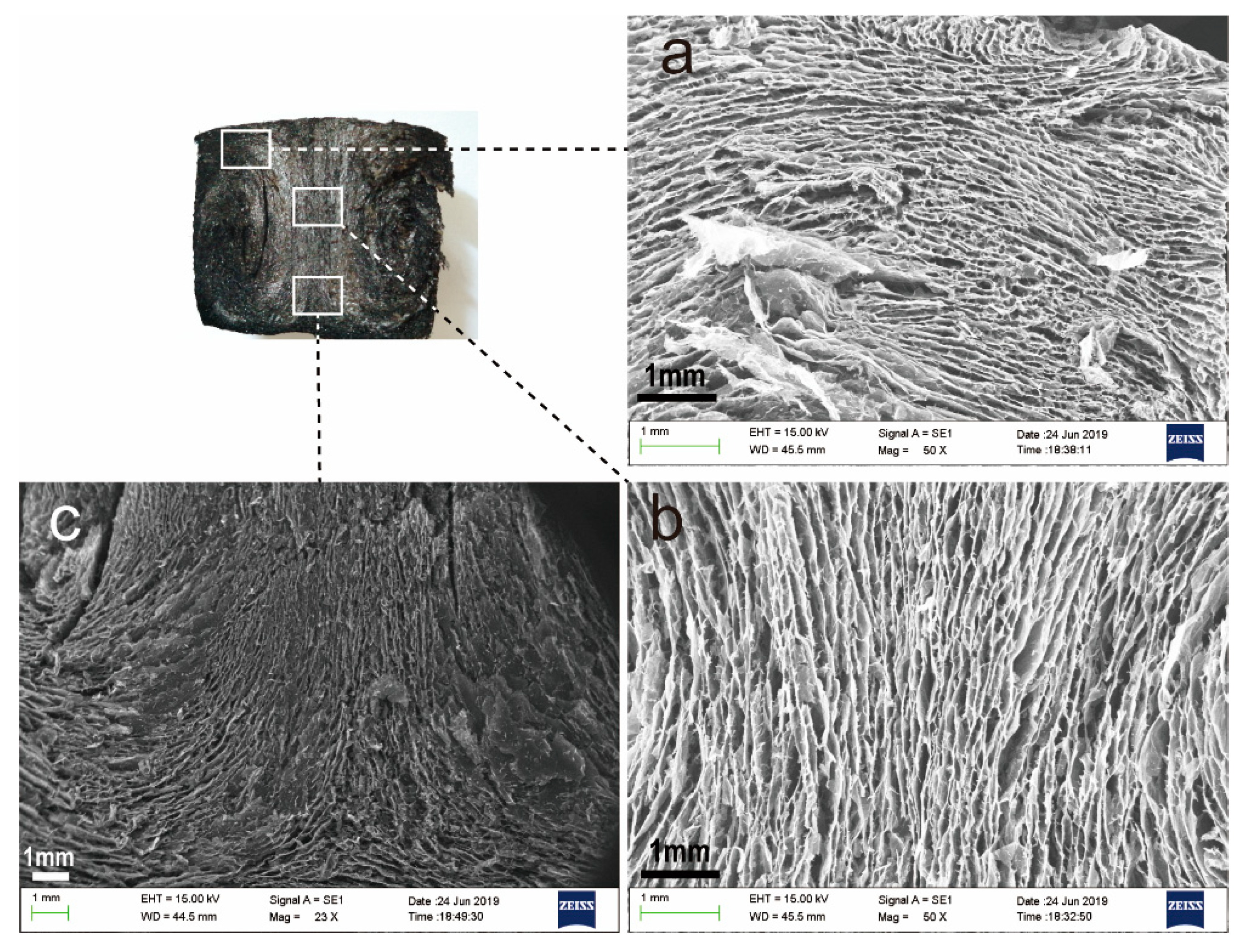
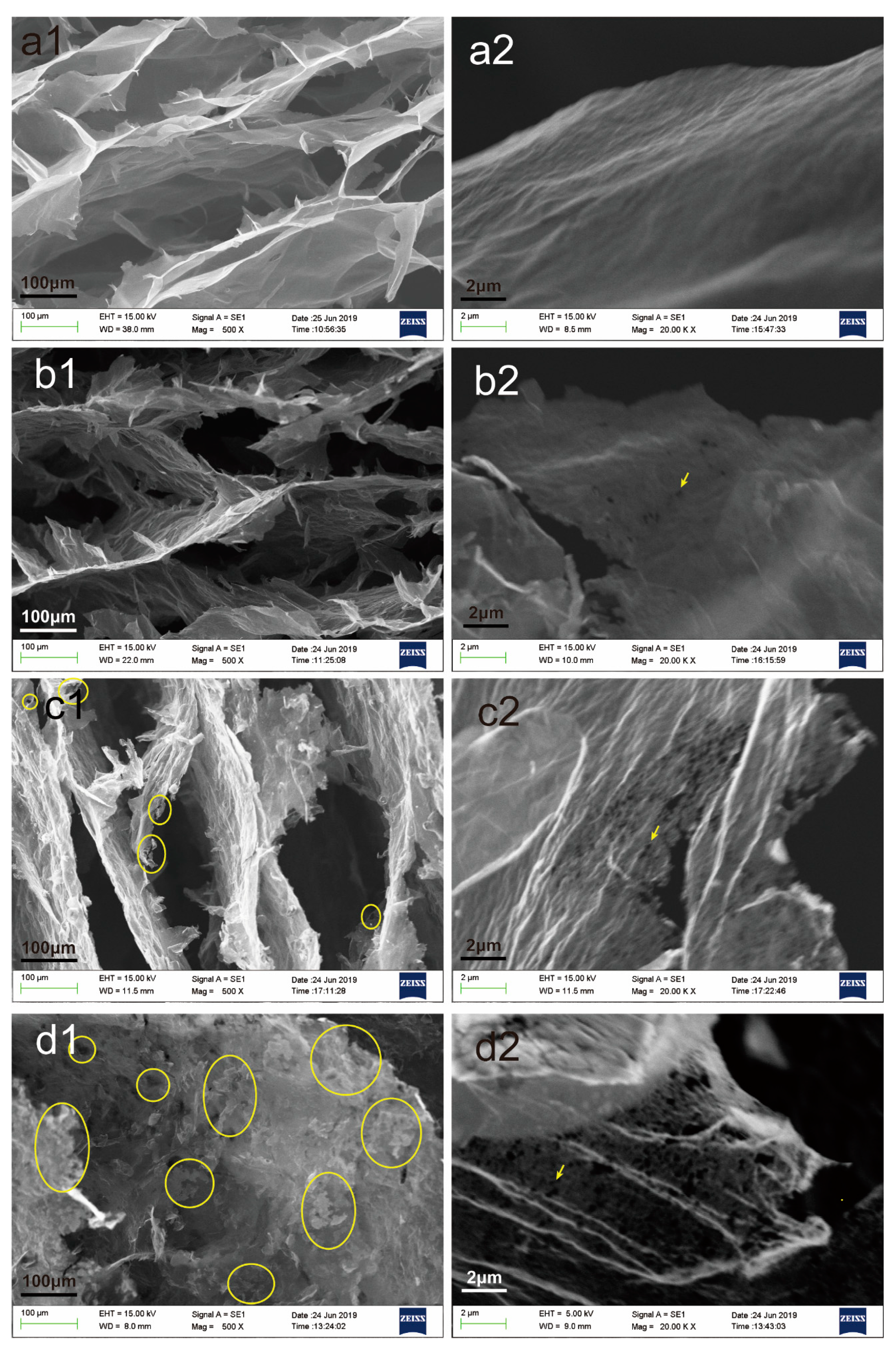
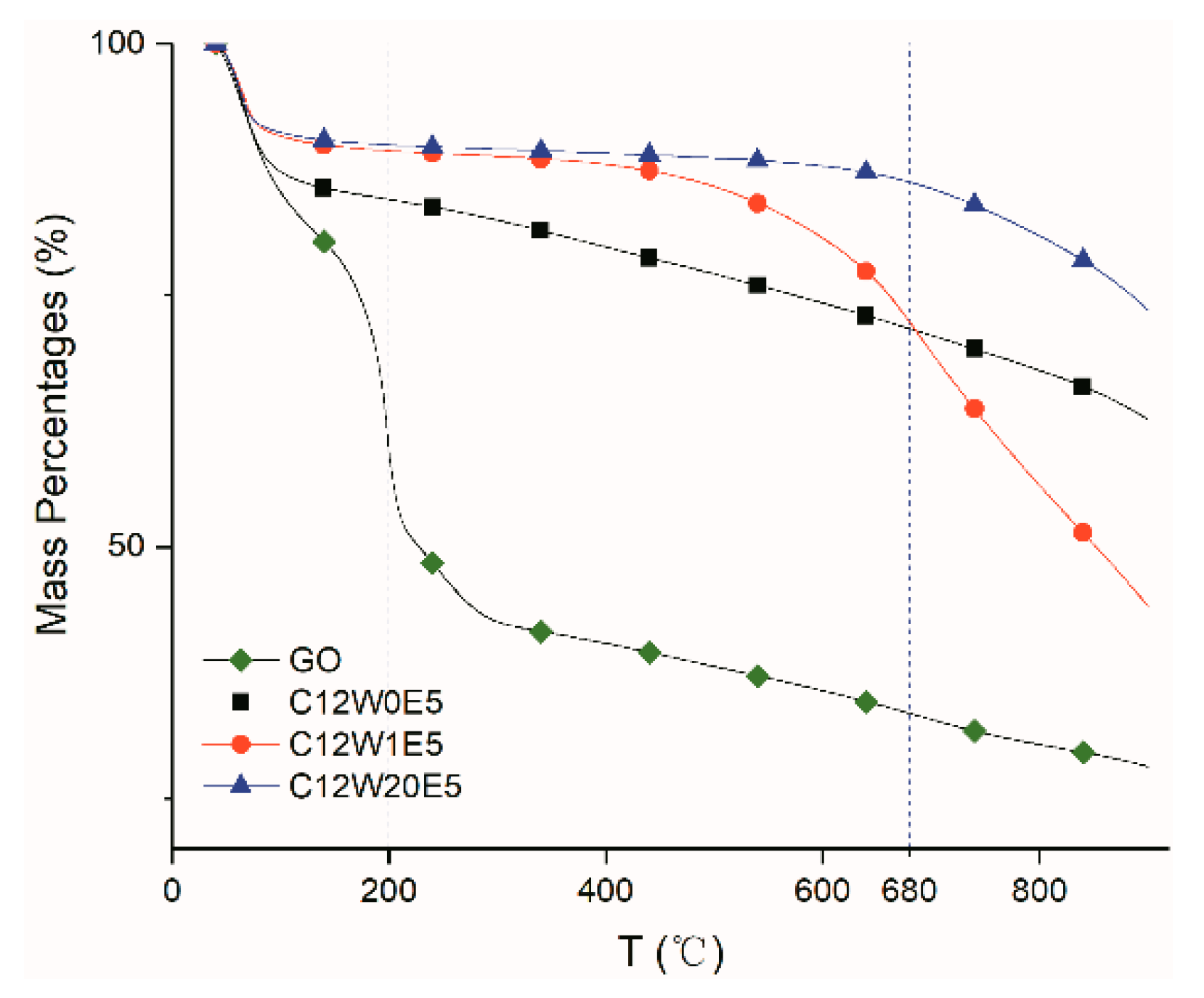
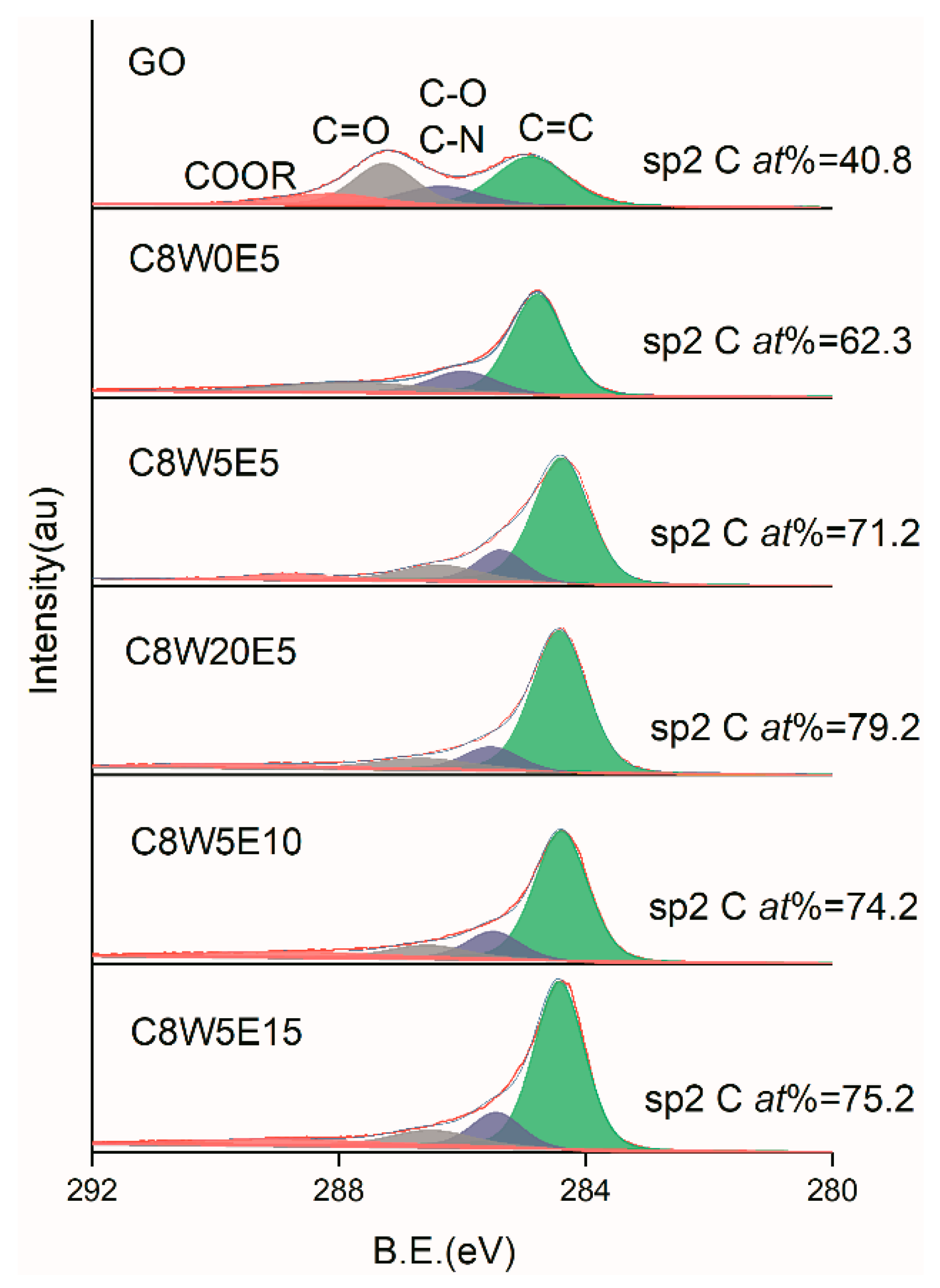
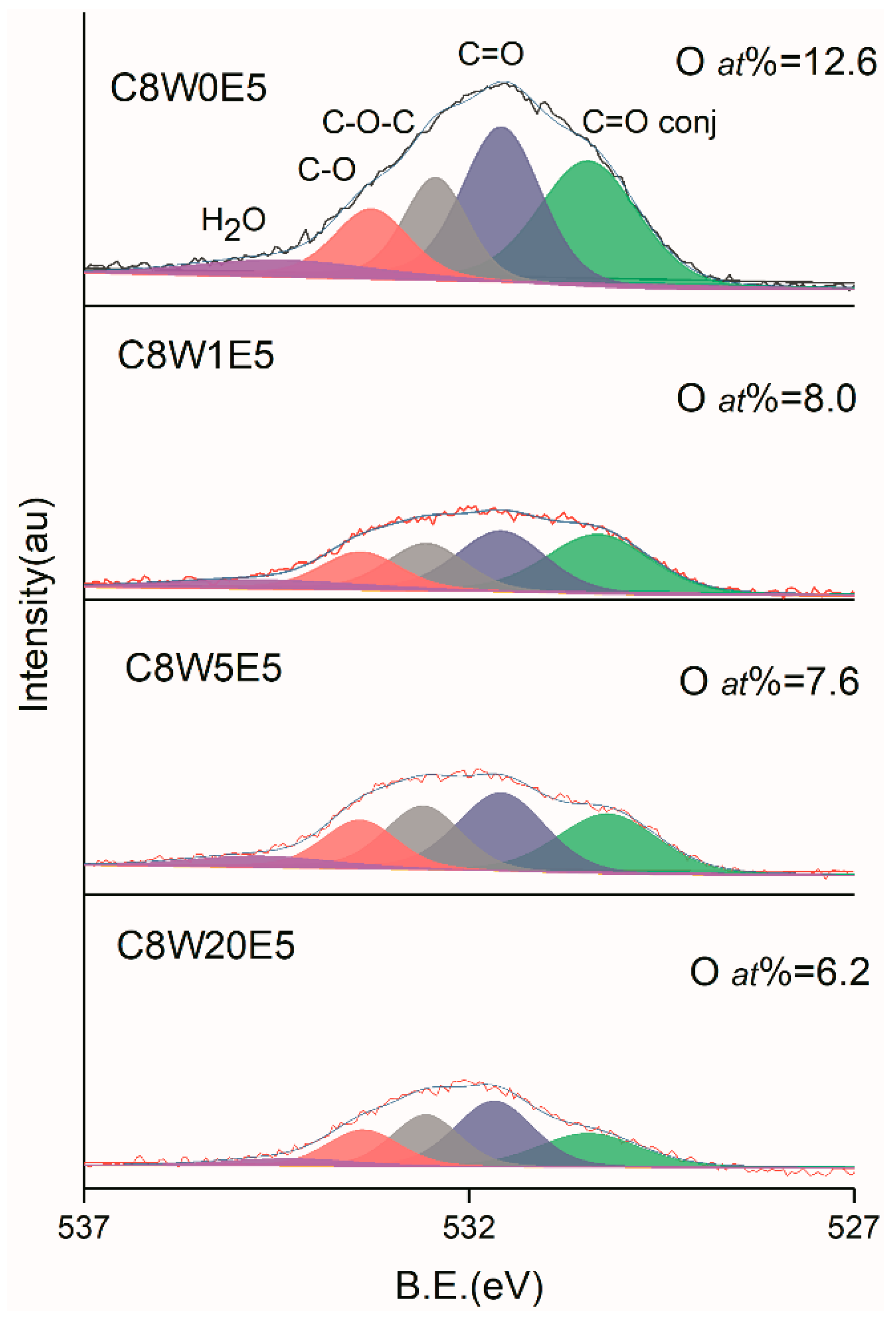
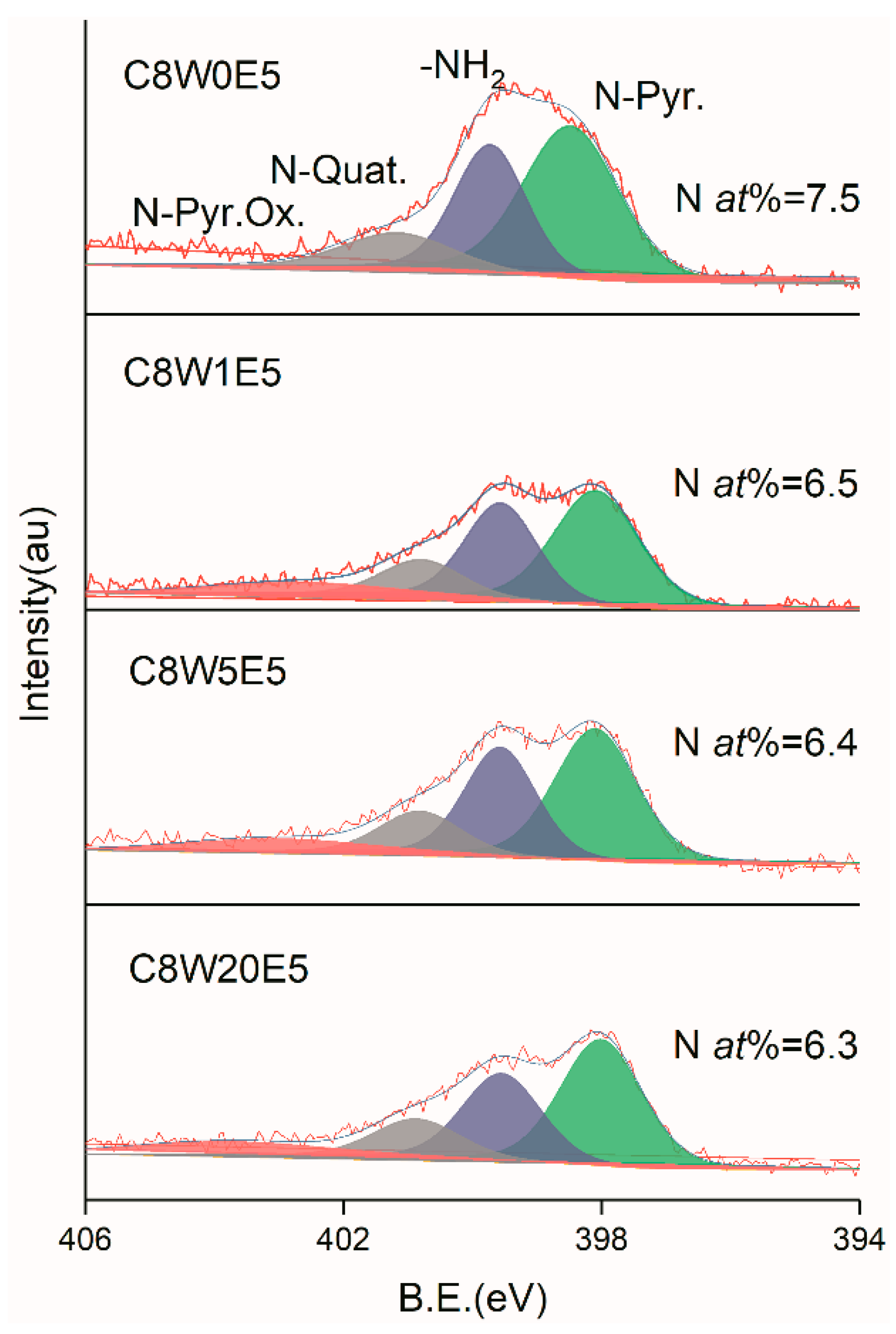
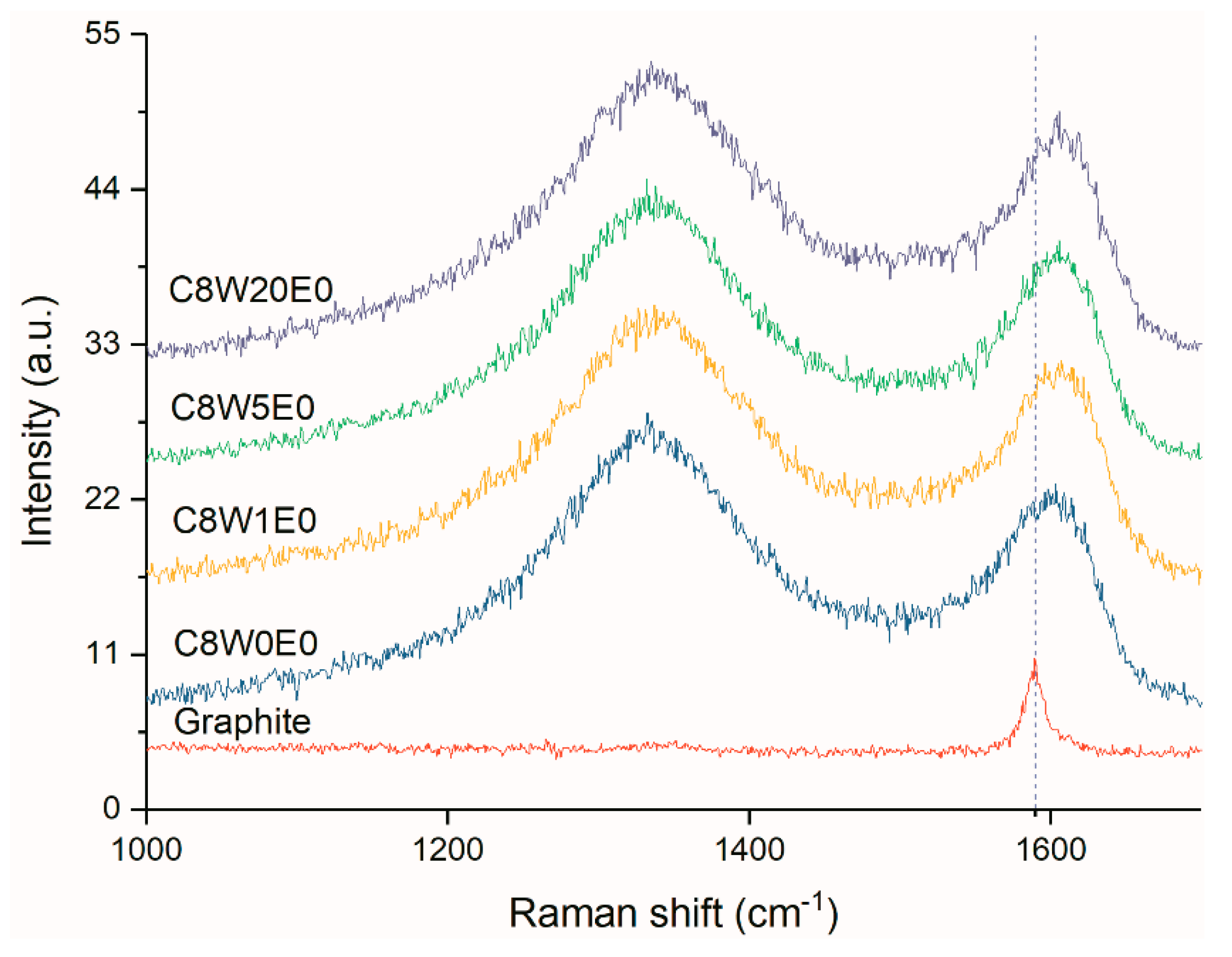

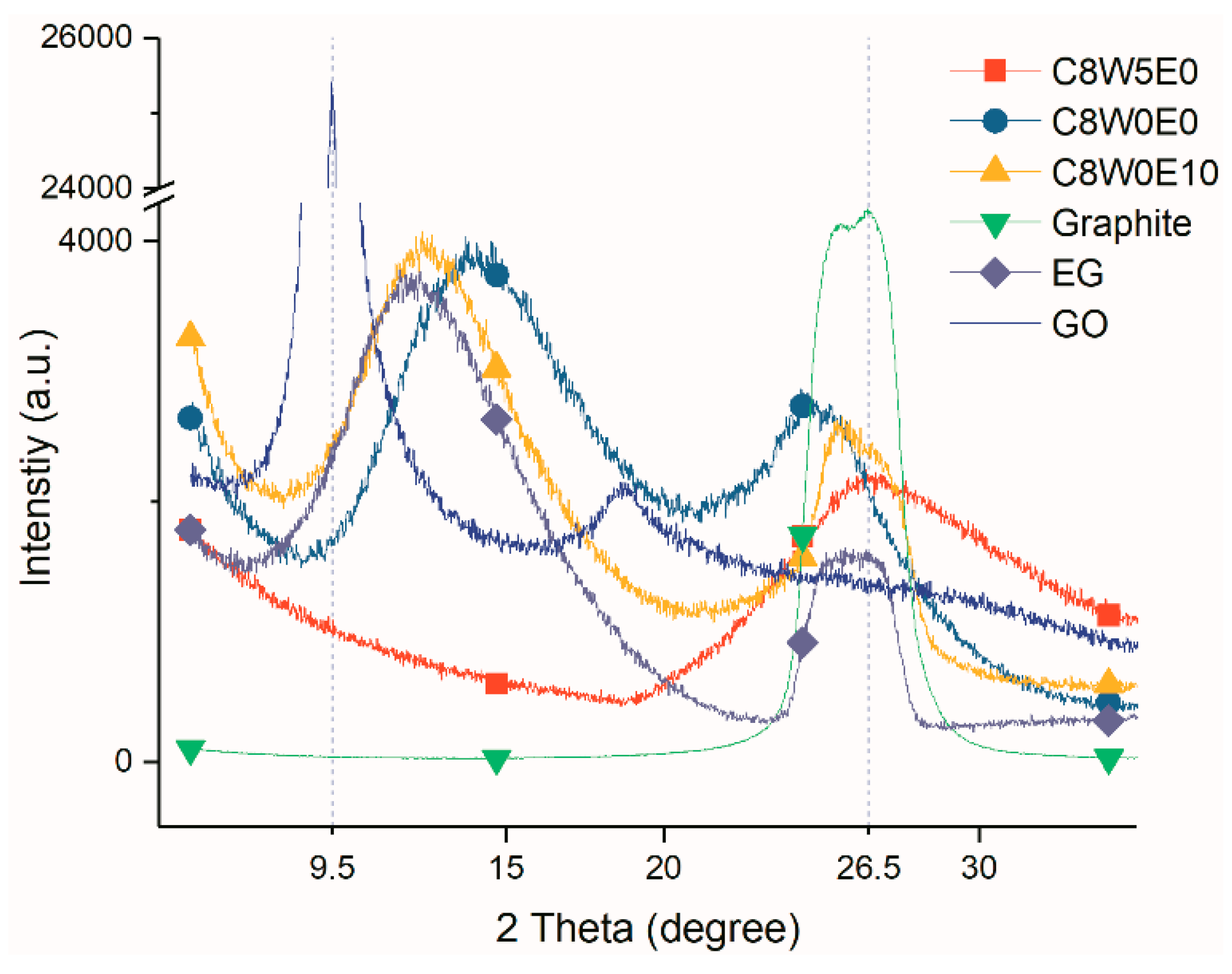
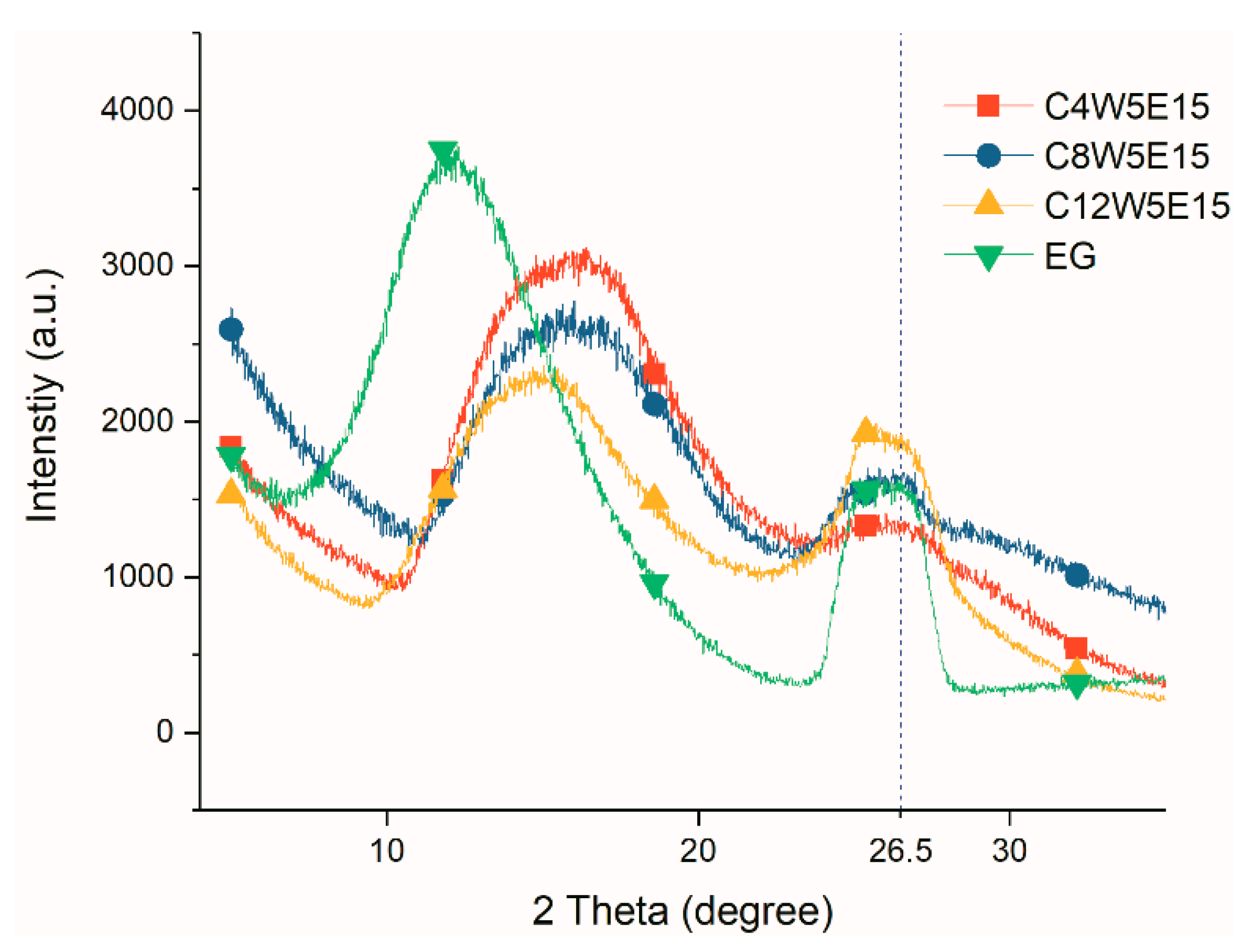
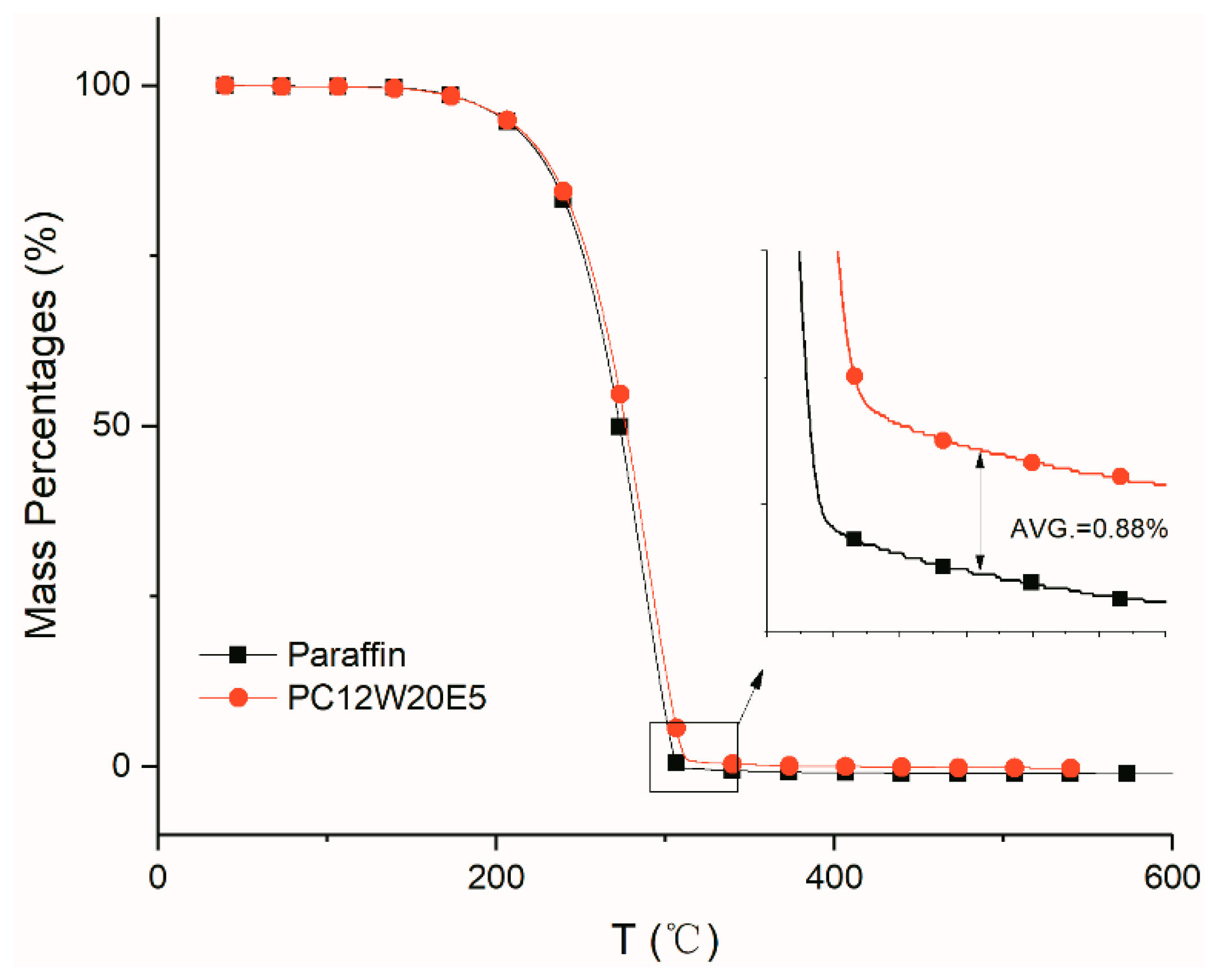
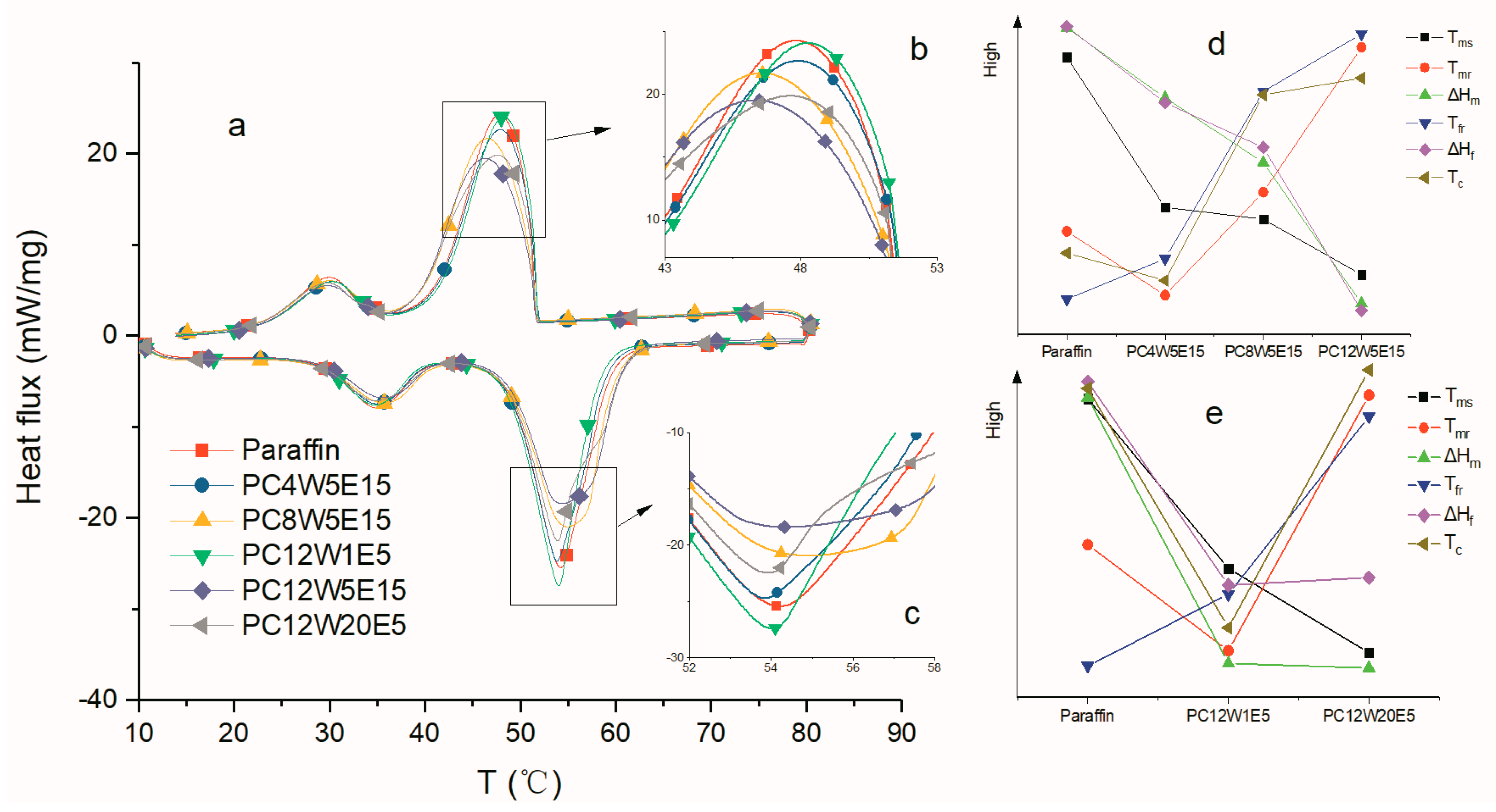
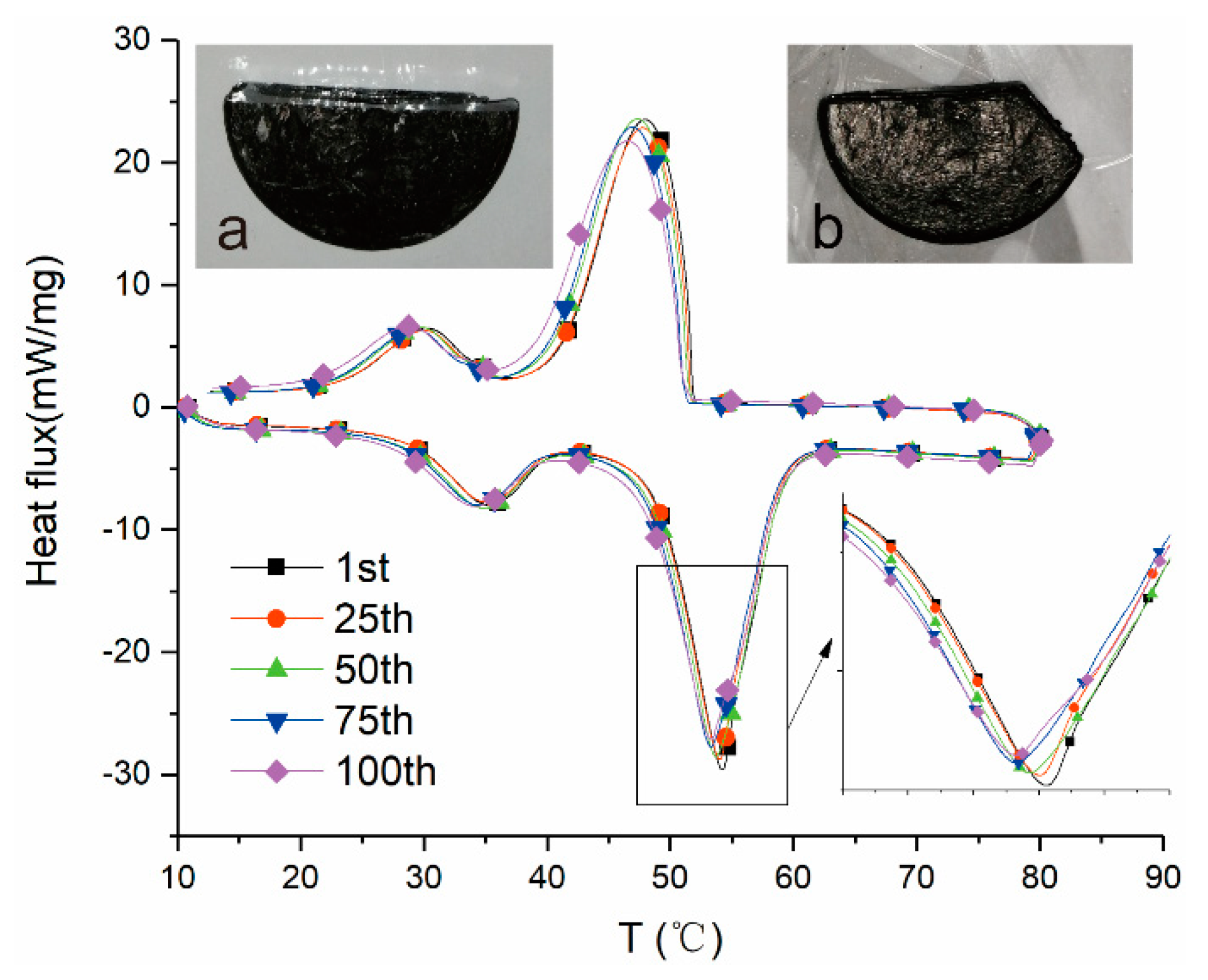
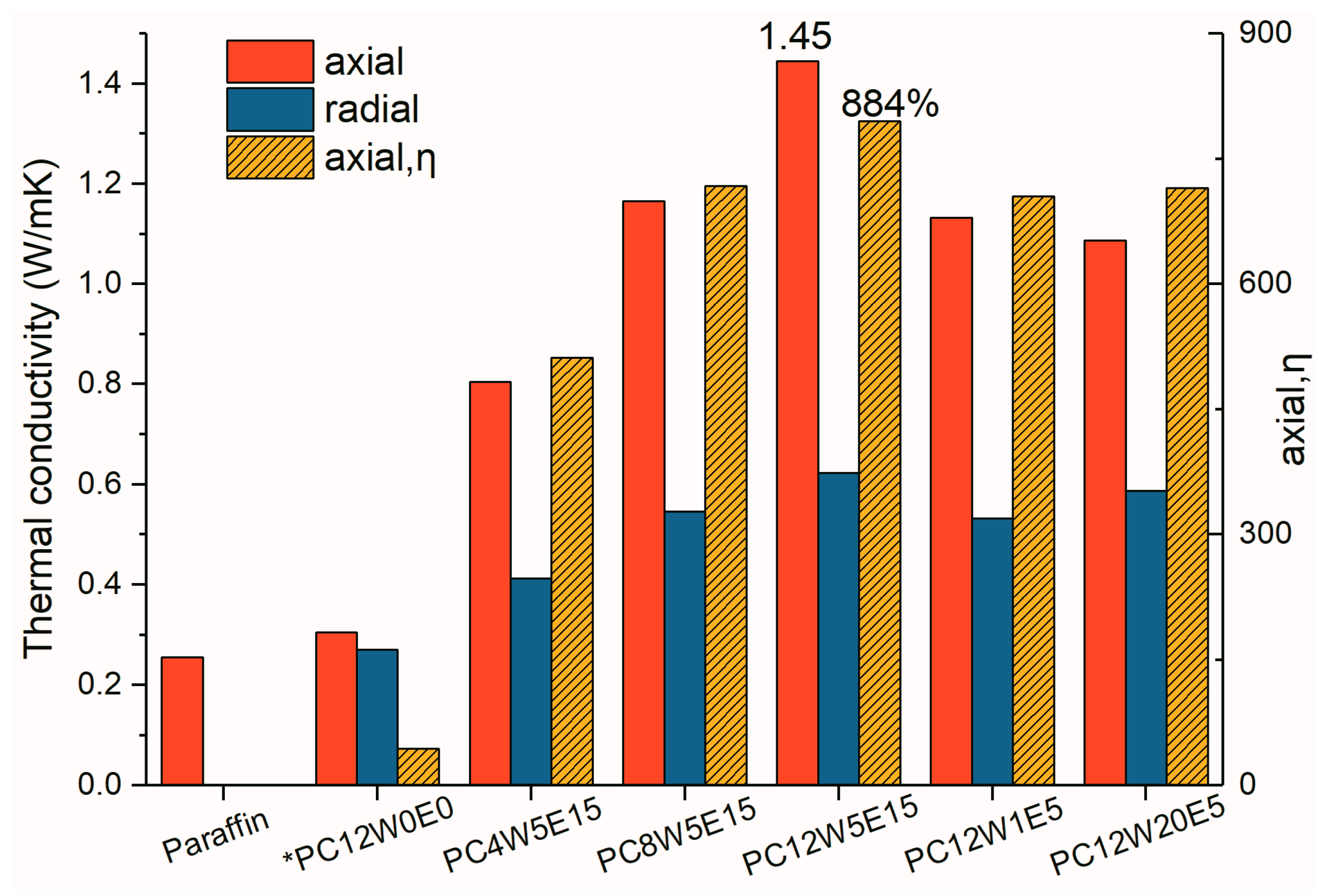
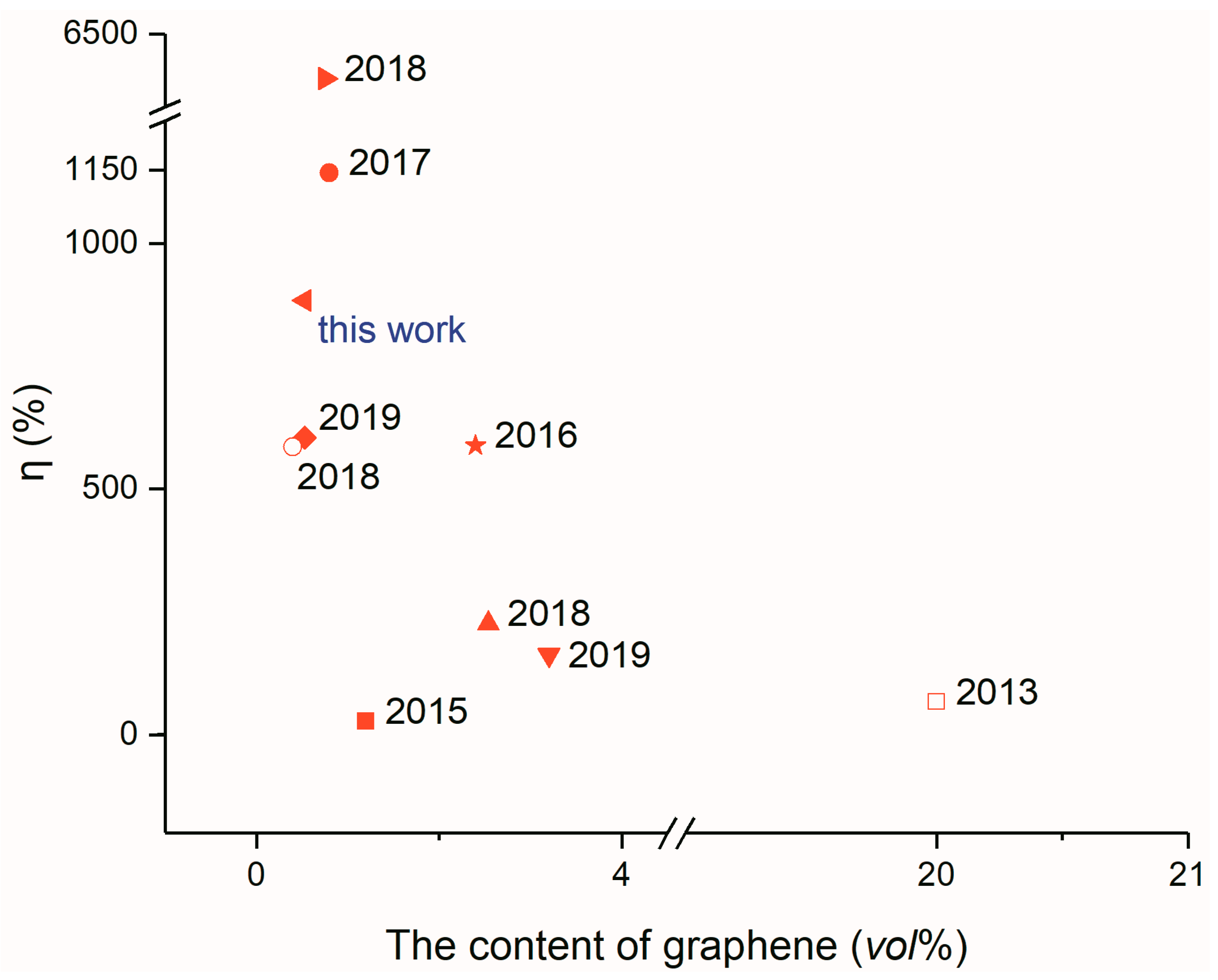

| Sample ID | Tms (°C) | Tmr (°C) | ∆Hm (J/g) | Tfr (°C) | ∆Hf(J/g) | Tc (°C) | ρ * (mg/cm3) |
|---|---|---|---|---|---|---|---|
| paraffin | 48.95 | 10.69 | 164.8 | 10.26 | 168.9 | 1.11 | / |
| PC4W5E15 | 48.81 | 10.26 | 161.9 | 10.56 | 165.7 | 0.9 | 8.53 |
| PC8W5E15 | 48.80 | 10.96 | 159.2 | 11.81 | 163.8 | 2.29 | 10.06 |
| PC12W5E15 | 48.75 | 11.93 | 153.3 | 12.24 | 157.0 | 2.41 | 11.87 |
| PC12W1E5 | 48.81 | 9.52 | 159.7 | 10.86 | 163.8 | 0.44 | 9.87 |
| PC12W20E5 | 48.74 | 12.35 | 159.6 | 12.34 | 164.0 | 1.16 | 9.23 |
© 2019 by the authors. Licensee MDPI, Basel, Switzerland. This article is an open access article distributed under the terms and conditions of the Creative Commons Attribution (CC BY) license (http://creativecommons.org/licenses/by/4.0/).
Share and Cite
Huang, J.; Zhang, B.; He, M.; Huang, X.; Yin, G.; Cui, Y. Preparation of Anisotropic Aerogels with Pristine Graphene by Heat Flow and Study of Their Effects on Heat Transfer in Paraffin. Nanomaterials 2019, 9, 1622. https://doi.org/10.3390/nano9111622
Huang J, Zhang B, He M, Huang X, Yin G, Cui Y. Preparation of Anisotropic Aerogels with Pristine Graphene by Heat Flow and Study of Their Effects on Heat Transfer in Paraffin. Nanomaterials. 2019; 9(11):1622. https://doi.org/10.3390/nano9111622
Chicago/Turabian StyleHuang, Jinhui, Buning Zhang, Ming He, Xue Huang, Guoqiang Yin, and Yingde Cui. 2019. "Preparation of Anisotropic Aerogels with Pristine Graphene by Heat Flow and Study of Their Effects on Heat Transfer in Paraffin" Nanomaterials 9, no. 11: 1622. https://doi.org/10.3390/nano9111622
APA StyleHuang, J., Zhang, B., He, M., Huang, X., Yin, G., & Cui, Y. (2019). Preparation of Anisotropic Aerogels with Pristine Graphene by Heat Flow and Study of Their Effects on Heat Transfer in Paraffin. Nanomaterials, 9(11), 1622. https://doi.org/10.3390/nano9111622






